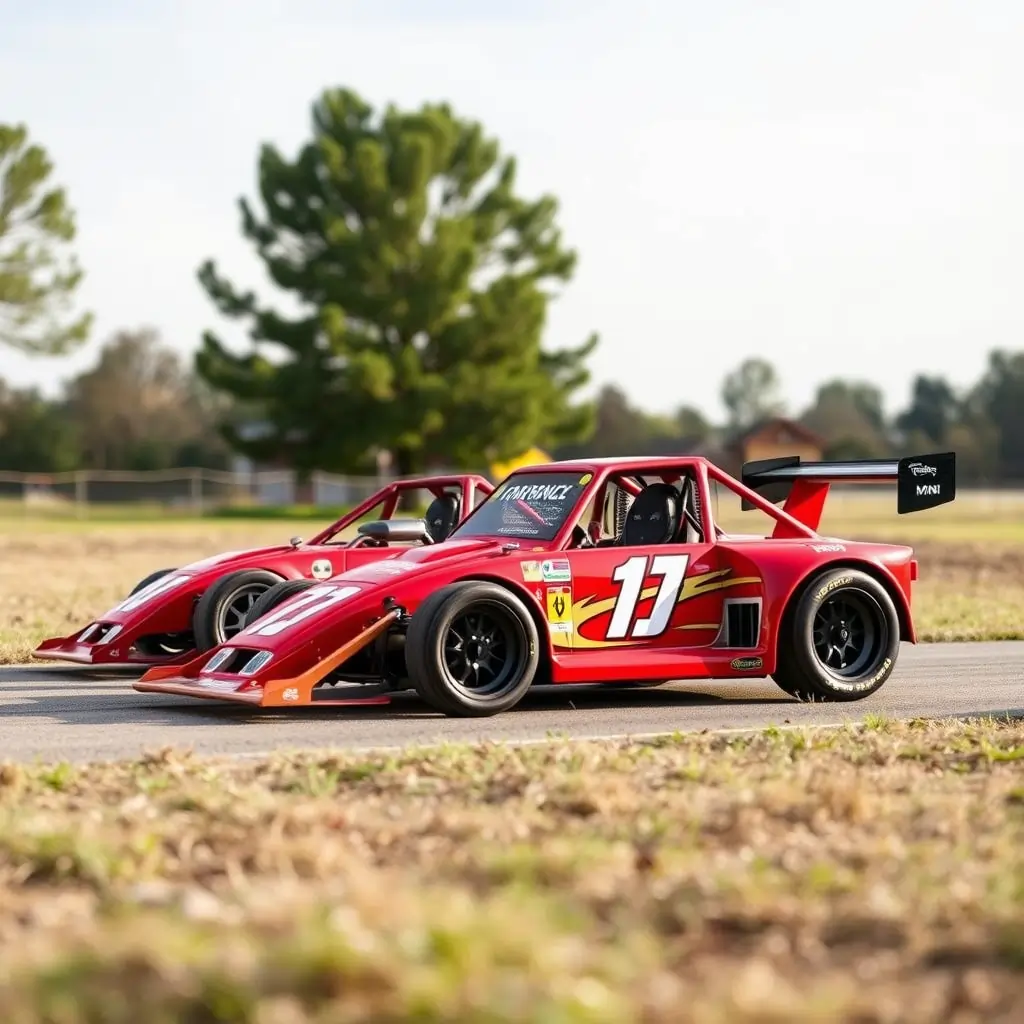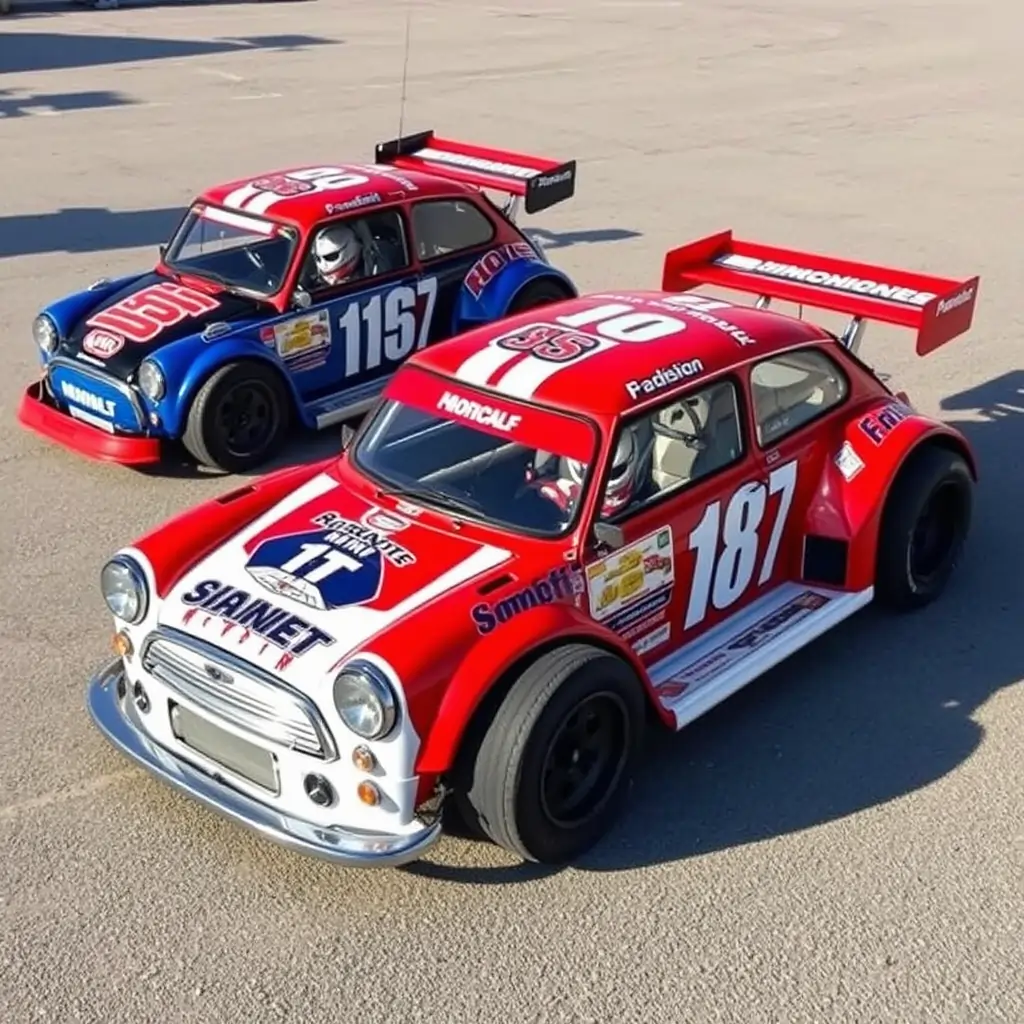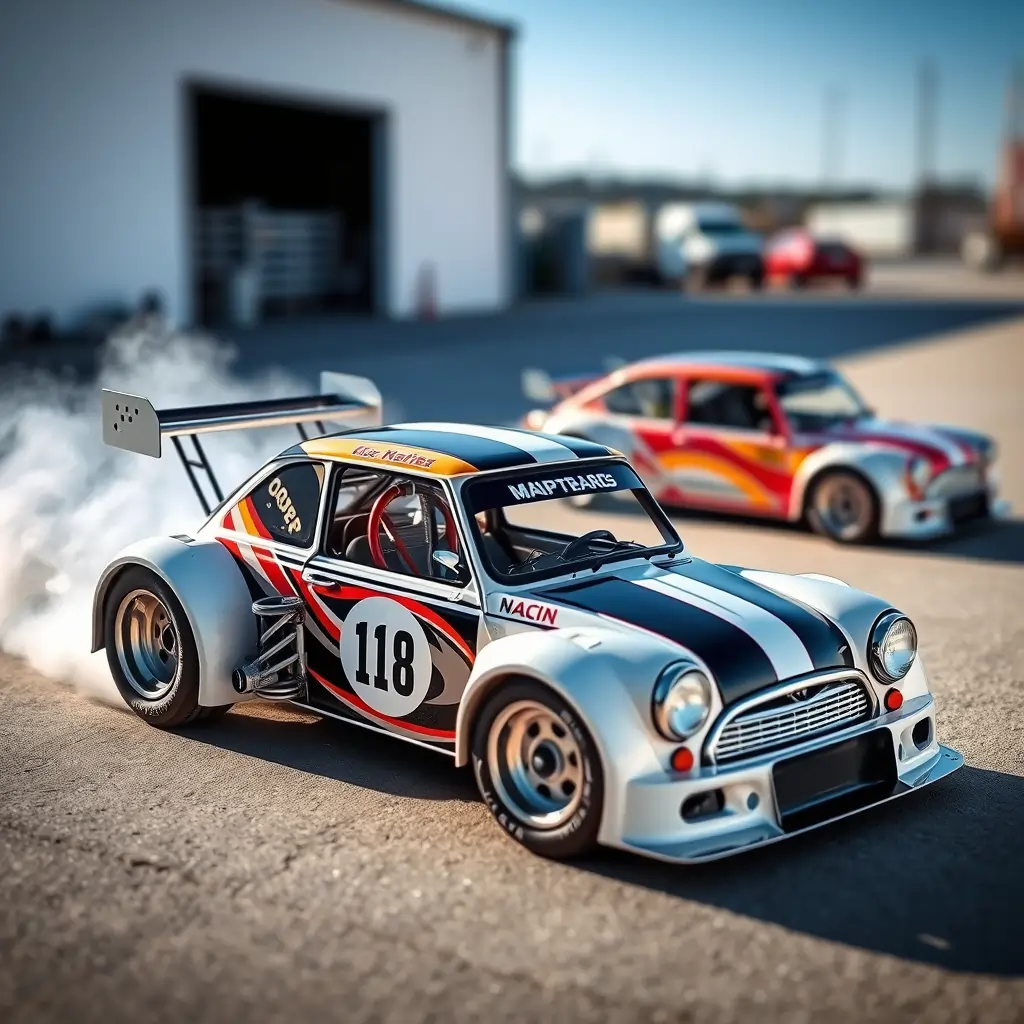Mini modified race cars have taken the motorsport world by storm. These compact yet powerful vehicles are beloved by racing enthusiasts for their agility, speed, and the sheer thrill they deliver on the track. In this comprehensive guide, we’ll explore everything you need to know about mini modified race cars, from their origins to how to get started in this exciting sport.
What is a Mini Modified Race Car?
A mini modified race car is a specialized racing vehicle designed for competitive racing in various formats, often on short tracks. These cars typically feature a lightweight body, a powerful engine, and modifications that enhance their performance. The goal is to create a car that is not only fast but also responsive to driver input.
The Appeal of Mini Modified Race Cars
One of the biggest draws of the mini modified race car scene is accessibility. Unlike full-sized stock cars, which can be prohibitively expensive, mini modifieds offer a more budget-friendly entry point. Additionally, the community surrounding mini modified racing is vibrant and welcoming, making it easy for newcomers to get involved.
A Brief History of Mini Modified Racing

The concept of modified racing dates back several decades. The first mini modified race cars emerged as a response to the need for smaller, more nimble vehicles that could compete on tighter tracks. Over the years, they have evolved significantly, incorporating advanced technology and engineering that have made them more competitive than ever.
The Evolution of Design
Early mini modified race cars were often improvised from older models. Today, manufacturers design them with performance in mind, focusing on aerodynamics, weight distribution, and engine efficiency. This evolution has turned the mini modified race car into a high-tech machine that showcases both driver skill and engineering prowess.
Key Milestones in Mini Modified Racing History
| Year | Milestone |
|---|---|
| 1950s | The birth of modified racing in the U.S. |
| 1970s | Introduction of lightweight materials in race car construction. |
| 1980s | Rise in popularity of mini modifieds in local racing circuits. |
| 2000s | Increased standardization of regulations to ensure fair competition. |
| 2020s | Emphasis on safety and technology advancements. |
Key Features of Mini Modified Race Cars
To understand what makes a mini modified race car special, let’s take a look at some of its defining features:
1. Lightweight Construction
Mini modified race cars are designed to be lightweight, often constructed from materials like fiberglass or carbon fiber. This reduction in weight allows for faster acceleration and better handling.
2. High-Performance Engines
Most mini modifieds are equipped with powerful engines that provide significant horsepower in a compact frame. These engines are often modified to enhance performance, making them capable of reaching high speeds on the track.
3. Advanced Suspension Systems
The suspension in a mini modified race car is crucial for handling. With advanced setups that include coilovers and adjustable components, drivers can fine-tune their vehicles for different track conditions.
4. Safety Features
Safety is paramount in racing. Mini modifieds are equipped with roll cages, racing seats, and harnesses that ensure drivers are secure during high-speed maneuvers. These features are vital for protecting drivers in the event of an accident.
Getting Started with Mini Modified Racing
If you’re interested in getting into mini modified racing, here’s a step-by-step guide to help you navigate the process.
Step 1: Research and Learn
Before diving into the world of mini modified race cars, it’s essential to do your homework. Familiarize yourself with the different classes of mini modified racing and the rules associated with each. Check out resources like USAC Racing for official guidelines and information.
Step 2: Find a Local Track
Locate a racing facility near you that hosts mini modified events. Many tracks offer “test and tune” nights where you can see mini modifieds in action and talk to drivers. This firsthand experience can be invaluable.
Step 3: Choose Your Car
Deciding on a mini modified race car can be daunting, especially for newcomers. You can either purchase a pre-built car or build one from the ground up. Each option has its pros and cons, so weigh them carefully based on your budget and mechanical skills.

| Option | Pros | Cons |
|---|---|---|
| Pre-built Car | Ready to race; less time required | Higher upfront cost |
| DIY Build | Customization options; potentially lower cost | Time-consuming; requires skill |
Step 4: Join a Racing Club
Joining a local racing club or association can provide support and resources for newcomers. Organizations often host events, provide mentorship, and create a sense of community among racers.
Step 5: Practice and Compete
Once you have your mini modified race car ready, it’s time to hit the track. Practice is crucial, as it helps you understand the nuances of your vehicle and improve your driving skills. When you feel confident, sign up for a race!
Tips for Racing a Mini Modified
To excel in mini modified racing, consider these tips:
1. Know Your Car
Understanding your vehicle’s mechanics is crucial. Spend time learning about its systems, and don’t hesitate to make adjustments for better performance.
2. Focus on Technique
Racing is as much about skill as it is about speed. Work on your racing technique, including cornering, braking, and throttle control.
3. Stay Physically Fit
Racing can be physically demanding. Maintaining your fitness level will help you perform better on the track, especially during longer races.
4. Build Relationships
The mini modified racing community is supportive. Building relationships with other racers can lead to valuable insights, advice, and even friendships.
5. Understand the Rules
Each track may have its specific rules and regulations. Familiarize yourself with these to avoid penalties and ensure a fair racing experience.
Table: Common Racing Rules and Regulations
| Rule Category | Description |
|---|---|
| Safety Gear | Helmets, fire suits, and gloves required. |
| Vehicle Specs | Specific dimensions and weight restrictions. |
| Engine Regulations | Restrictions on engine size and modifications. |
| Track Etiquette | Guidelines for conduct during races. |
The Future of Mini Modified Racing

The future looks bright for mini modified race cars. With advancements in technology and increasing popularity, more people are discovering the thrill of this sport. The continued development of safer and more efficient racing vehicles will also contribute to the longevity of mini modified racing.
Innovations on the Horizon
As technology advances, mini modified race cars are expected to incorporate even more innovative features, from electronic systems to improved aerodynamics. This evolution will enhance both performance and safety, making the sport more exciting for participants and spectators alike.
Potential Changes in Regulations
As the sport grows, we may see changes in regulations to accommodate new technologies and safety advancements. Keeping abreast of these changes will be essential for any serious competitor.
The Community Aspect of Mini Modified Racing
Mini modified racing isn’t just about the cars; it’s also about the people involved. The community surrounding this sport is one of its greatest assets.
1. Supportive Network
Many racers form tight-knit communities. They share tips, lend tools, and often work together on projects, fostering a sense of camaraderie.
2. Events and Gatherings
Throughout the racing season, various events bring enthusiasts together. From local races to larger competitions, these gatherings are an excellent way for drivers and fans to connect.
3. Mentorship Opportunities
Newcomers often find mentors within the community. Experienced racers are usually willing to share their knowledge and help guide new drivers as they navigate their early racing careers.
FAQs About Mini Modified Race Cars
1. What is a mini modified race car?
A lightweight, high-performance racing vehicle designed for short track competitions.
2. How fast can a mini modified race car go?
Speeds can exceed 100 mph (160 km/h) depending on modifications and track conditions.
3. How do I get started in mini modified racing?
Research local tracks, join a racing club, and consider buying or building a mini modified.
4. What are the costs involved in mini modified racing?
Costs vary; expect expenses for the car, maintenance, racing fees, and safety gear.
5. Do I need a special license to race mini modifieds?
Yes, most tracks require a racing license or membership in a racing organization.
6. What safety features are in mini modified race cars?
Features include roll cages, racing seats, harnesses, and fire suppression systems.
7. Can I build my own mini modified race car?
Yes, building your own is common and allows for customization.
8. How do I maintain a mini modified race car?
Regularly check tire pressure, oil levels, brakes, and suspension components.
9. What types of tracks are mini modifieds raced on?
Typically on short dirt or asphalt tracks, ranging from 1/4 to 1/2 mile.
10. What’s the best way to improve my driving skills?
Practice regularly, watch experienced racers, and consider coaching.
11. Are there different classes of mini modified racing?
Yes, there are various classes with specific rules for cars and engines.
12. How do I find a local racing community?
Look for local clubs, social media groups, and attend events at nearby tracks.
13. What are some common mistakes beginners make in mini modified racing?
Not understanding car setup, misjudging braking, and poor communication with pit crews.
14. How can I promote my mini modified racing team?
Use social media, create a website, and seek local sponsorships.
15. What is the future of mini modified racing?
Promising, with tech advancements and growing interest among new racers.
Conclusion
In conclusion, the world of mini modified race cars is an exhilarating mix of speed, skill, and community. Whether you’re a seasoned racer or just starting, there’s a place for you in this vibrant sport. The mini modified race car scene offers countless opportunities for excitement, competition, and camaraderie.
If you’re looking to get involved, remember to do your research, find the right local track, and connect with fellow enthusiasts. The road ahead is full of thrilling possibilities—so buckle up and get ready for the ride of a lifetime!


[…] In conclusion, dirt modified race car wraps are not just about aesthetics; they serve crucial functional purposes that enhance branding, protect the car, and contribute to the overall racing experience. Whether you’re a seasoned racer or just starting out, investing in a quality wrap can significantly impact your visibility on the track and help you stand out in a competitive field. […]
[…] Modified Lite race cars can reach speeds of up to 120 mph, depending on the track conditions and eng… […]